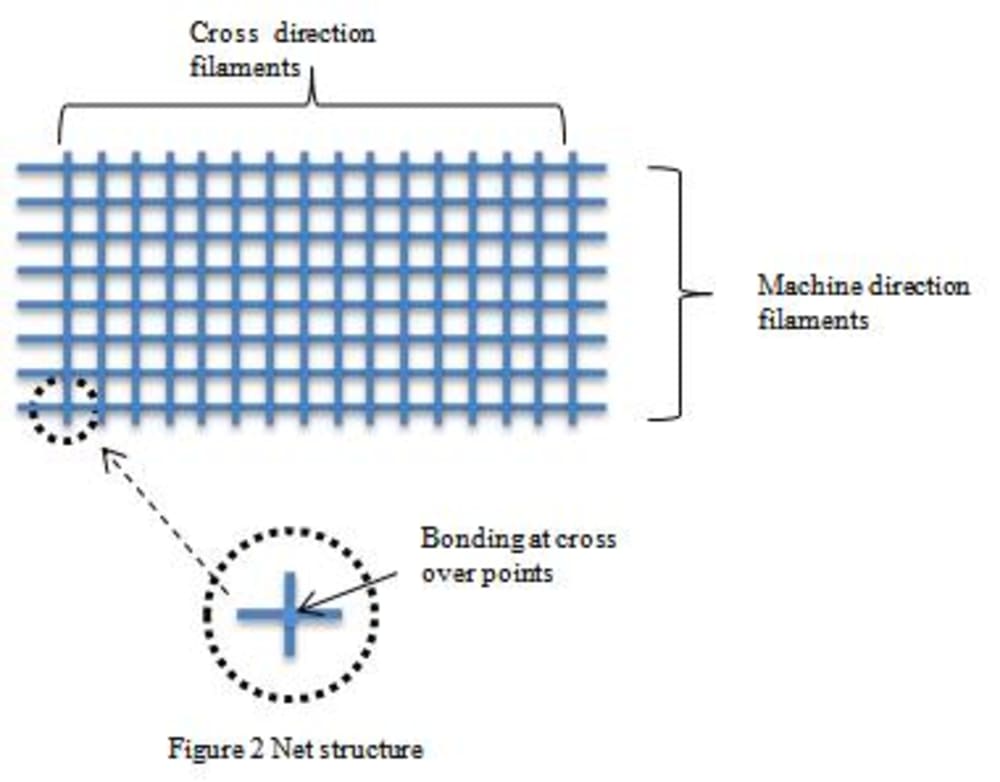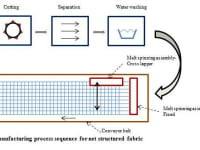Every day the usage of polymer based materials are increasing. Water bottles, one time use bags, food packaging and wrappers etc., are unavoidable. These materials are dumped into open land and causes environmental problems like soil pollution, blockage of canal, ingestion by wild life, long time for degradation, water pollution etc.
In India alone the usage of plastics for various applications is around 8.5 million tons for the financial year 2013. It is growing at the rate of 8 to 10% per year.
The methodology to process these polymer wastes and converting into a product with low conversion cost will benefit the environment.
Manufacturing process:
Manufacturing sequence from polymer waste to net structure fabrics is shown in the figure 1.
1. Collected polymer waste is processed through cutting machines. It makes in to small pieces, so that the materials other than polymer can be easily separated.
2. Cut pieces are passed in to air suction system. Suction pressure is maintained to collect only low density polymer materials and rest will fall down as waste.
3. The next process is washing with water. Water is separated using a paper felt assembly. The next process is a dryer assembly to remove moisture present in the material.
4. Cleaned and dried polymer materials are conveyed to a melt spinning line. Here the materials are heated to melting point using heating coils. Solution is forced through thousands of fine holes by using a pump. Diameter of the aperture is decided based on filament size required.
5. Filaments coming out from the spinnerets are laid over conveyor belt and it can be heat calendared, needle punched or hydro entangled to produce nonwoven fabrics. Fabrics produced through this route are can be used in mulches, floor mates, green house, erosion control, soil stabilization etc.
6. Net fabric shown in figure 2 can be produced by using additional moving melting spinning line in cross direction. Cross direction filaments are laid over machine direction filaments before solidification results in bonded structure at cross over points.
Innovative idea of this process is using a cross lapping melt spinning assembly and no further bonding required for this process.
Bird nets, mulches, green house roofing etc., are the applications of nets produced through this process.
Like this entry?
-
About the Entrant
- Name:Vijayasekar Ramasamy
- Type of entry:individual
- Software used for this entry:Design drawn using MS power point tools
- Patent status:none





